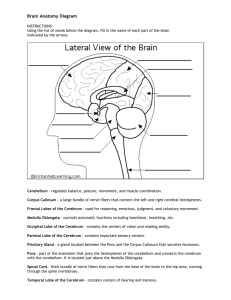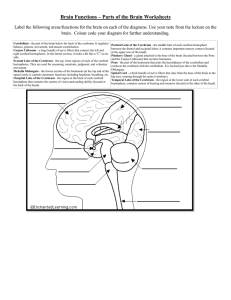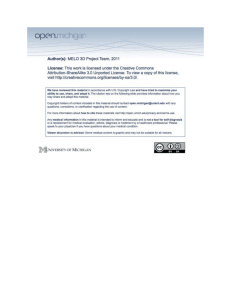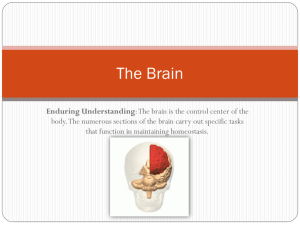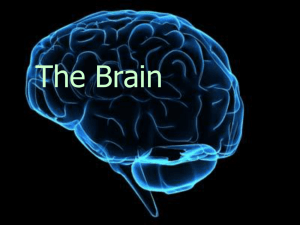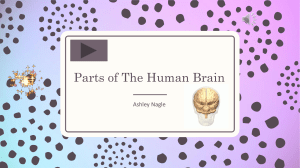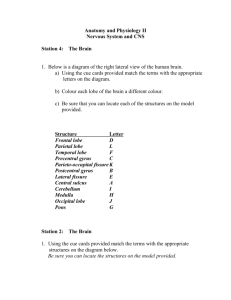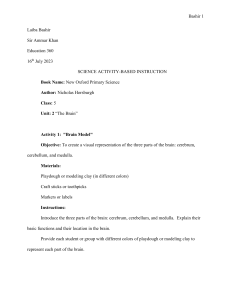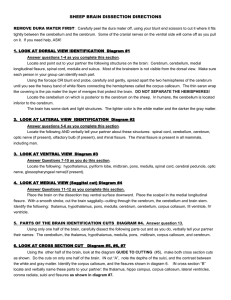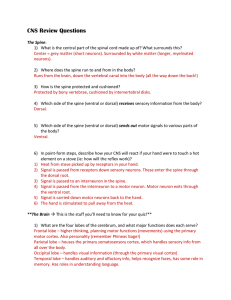Sheep Brain Dissection Worksheet: Anatomy & Function
advertisement
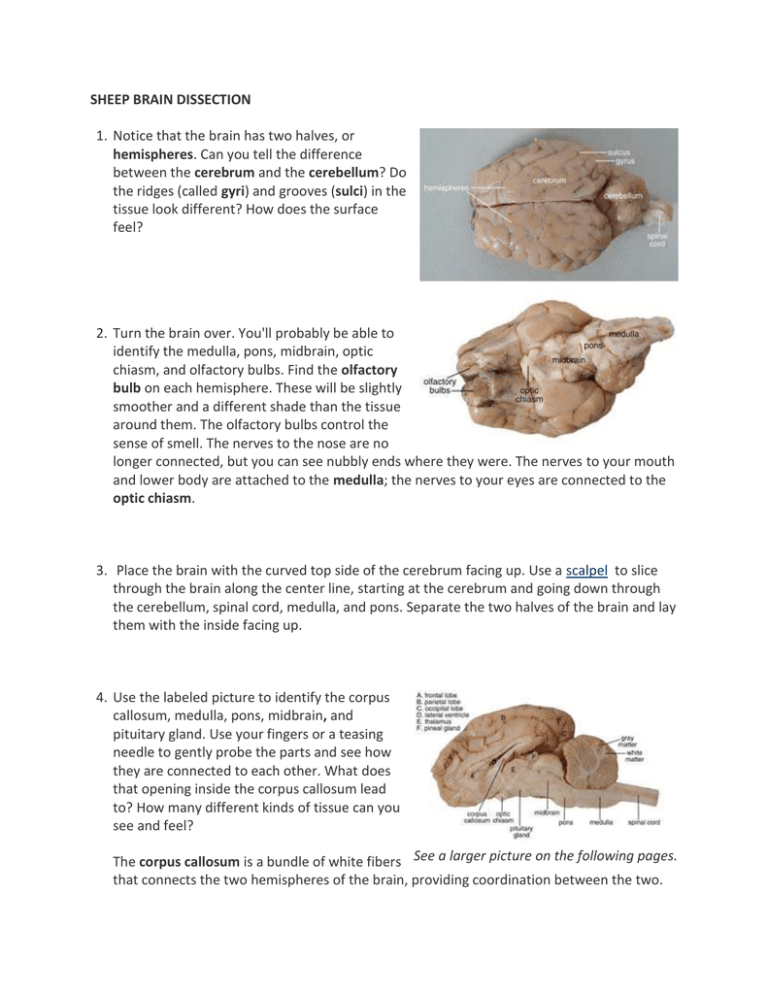
SHEEP BRAIN DISSECTION 1. Notice that the brain has two halves, or hemispheres. Can you tell the difference between the cerebrum and the cerebellum? Do the ridges (called gyri) and grooves (sulci) in the tissue look different? How does the surface feel? 2. Turn the brain over. You'll probably be able to identify the medulla, pons, midbrain, optic chiasm, and olfactory bulbs. Find the olfactory bulb on each hemisphere. These will be slightly smoother and a different shade than the tissue around them. The olfactory bulbs control the sense of smell. The nerves to the nose are no longer connected, but you can see nubbly ends where they were. The nerves to your mouth and lower body are attached to the medulla; the nerves to your eyes are connected to the optic chiasm. 3. Place the brain with the curved top side of the cerebrum facing up. Use a scalpel to slice through the brain along the center line, starting at the cerebrum and going down through the cerebellum, spinal cord, medulla, and pons. Separate the two halves of the brain and lay them with the inside facing up. 4. Use the labeled picture to identify the corpus callosum, medulla, pons, midbrain, and pituitary gland. Use your fingers or a teasing needle to gently probe the parts and see how they are connected to each other. What does that opening inside the corpus callosum lead to? How many different kinds of tissue can you see and feel? The corpus callosum is a bundle of white fibers See a larger picture on the following pages. that connects the two hemispheres of the brain, providing coordination between the two. The medulla is located right under the cerebellum. In this the nerves cross over so the left hemisphere controls the right side of the body and vice versa. This area of the brain controls the vital functions like heartbeat and respiration (breathing). The pons is next to the medulla. It serves as a bridge between the medulla and the upper brainstem, and it relays messages between the cerebrum and the cerebellum. The pituitary gland, which produces important hormones, is a sac-like area between the pons and the optic chiasm. This might be harder to locate, especially if it has been punctured. 5. Look closely at the inside of the cerebellum. You should see a branching "tree" of lighter tissue surrounded by darker tissue. The branches are white matter, which is made up of nerve axons. The darker tissue is gray matter, which is a collection of nerve cell bodies. You can see gray and white matter in the cerebrum, too, if you cut into a portion of it. 6. You can also use the letter labels on the internal anatomy picture to try to find the following: Ventricles contain cerebrospinal fluid. The occipital lobe receives and interprets visual sensory messages. The temporal lobe is involved in hearing and smell. You can find this by looking on the outside of one of the hemispheres. You will see a horizontal groove called the lateral fissure. The temporal lobe is the section of the cerebrum below this line. The frontal lobe also plays a part in smell, plus dealing with motor function. The parietal lobe handles all the sensory info except for vision, hearing, and smell. The thalamus is a "relay station" for sensory information. It receives messages from the nerve axons and then transmits them to the appropriate parts of the brain. The pineal gland produces important hormones. 7. Complete your Sheep Dissection Packet and follow your teacher’s clean up instructions.
